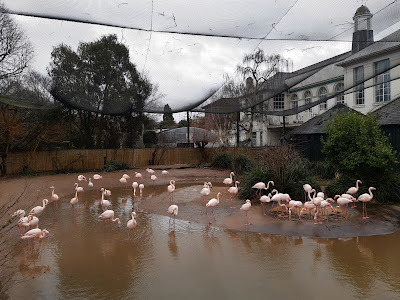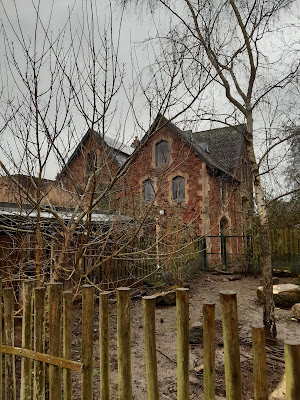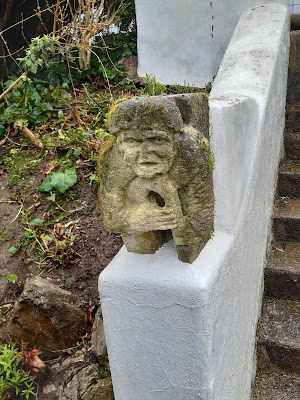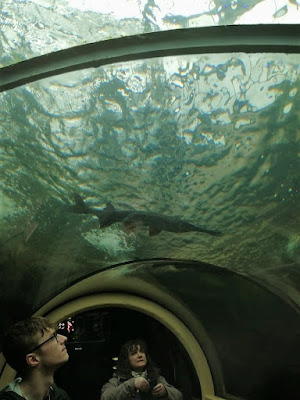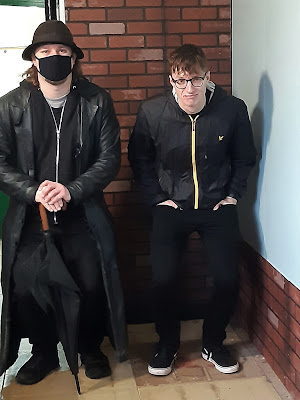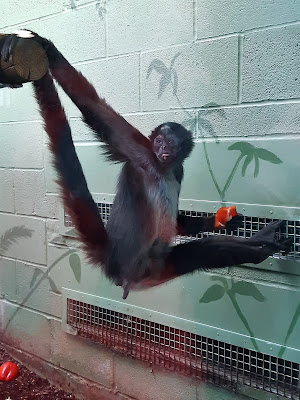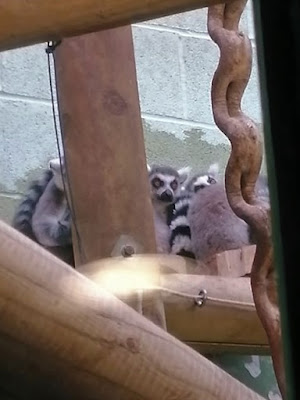My new collection. Learning Finity, arrived just over a week ago, Even Storm Eunice didn't hold up its delivery. Our collie, Cwtch was very interested in both the box and its contents. I think she must have been a librarian in a past life.
About Me

- Deborah Harvey Poetry
- Bristol , United Kingdom
- Poet and poetry facilitator. Letters after my name: BA, MA, AuDHD. Co-founder of the Leaping Word Poetry Consultancy, which provides advice for poets on writing, editing and publishing, as well as qualified counselling support for those exploring personal issues in their work - https://theleapingword.com. My sixth poetry collection, Love the Albatross, is now available from Indigo Dreams or directly from me.
Saturday, 26 February 2022
Border collies make the best librarians
My new collection. Learning Finity, arrived just over a week ago, Even Storm Eunice didn't hold up its delivery. Our collie, Cwtch was very interested in both the box and its contents. I think she must have been a librarian in a past life.
Sunday, 20 February 2022
A goodbye to Bristol Zoo
What with the announcement of the closing date and Son the Younger's imminent move north, we decided to go to Bristol Zoo one last time, not out of enduring regret - it's high time, after all - but because it played such a big part in our respective childhoods.
Despite its familiar entrance, the Zoo is a very different place from in the 60s, which is when my earliest memories of it date from. Back then, Johnny Morris filmed weekly segments for Animal Magic there, and there were two elephants, Wendy and Christina, giraffes, Bactrian camels, black rhinos, zebras and okapi, wolves, kangaroos, lions, tigers, white tigers, leopards, panthers, gorillas, chimps, orang-utans, polar bears, a bear pit with black bears, a monkey temple with red-bottomed monkeys - oh, so many inappropriate animals for a small urban site. Our arrival through the Guthrie Road entrance, with its free on-street parking, was usually timed to coincide with feeding time for the seal lions and nearby penguins.
Walking around, I found time collapsing as memories from my childhood visits clashed with those from my children's childhoods, and I struggled to get my bearings amid the shifting attractions. It turns out even the new 'immersive' Seal and Penguin coasts are over 20 years old now.
The Clifton Pavillion, which used to be the really posh restaurant and now hosts weddings, looked a bit drab yesterday (but the weather was terrible).
Friday, 11 February 2022
'Learning Finity' coming soon
I'm delighted that after a brief delay for personal reasons, my new collection of poems, Learning Finity, will be published on 14th March 2022 by Ronnie Goodyer and Dawn Bauling of Indigo Dreams Publishing. Here's the front cover, of St Leonard's Lane, which probably has the most ridiculous double yellow lines in the country.
The visual resemblance of the title design to the opening crawl of the Star Wars films is serendipitous, but not misplaced. The poems in Learning Finity are set in my native city of Bristol, but travel back and forth through time, where everything changes but stories are always remembering themselves.
link to its page on the Indigo Dreams website, where pre-orders are being taken, and for good measure, a colourised photo of Gloucester Road circa 1960, at the junction of Bishop Road, where my great-grandparents lived, before passing their house onto my grandparents and their eleven children in the late 1940s. You can see Mr Hacker's the greengrocer in the foreground, and on the opposite side of the road, Miss Wyatt's Newsagent, which features in one of the poems that makes up my Gloucester Road Odyssey.
Saturday, 5 February 2022
A truncated tour of Chepstow Castle
Son the Younger's car was due for an MOT and service in Newport, and since the weather forecast was good and since he's moving Up North (to Coventry) soon, I decided to make the most of him, and spare him the misery of hours spent waiting in Dunelm for it to be ready.
On previous such occasions we've been to Porthcawl and Merthyr Mawr, Llandaff Cathedral and the Welsh Folk Museum at St Fagan's, and Kenfig Burrows. This time we headed east to Chepstow ...
And then, after a ceremonial stand in the middle of the old Chepstow bridge, where Wales becomes England, it was back to Newport to drop Son the Younger off at the garage and home to Cwtch, who is now poised to learn how to ignore me in two languages.







